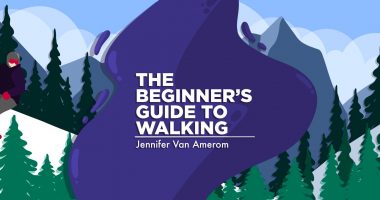My Experience With a Bone Density Test as an NMO Patient
Addressing a potential side effect of NMO treatments

It feels like there’s a test for everything. As I hit milestones with neuromyelitis optica (NMO), a rare autoimmune disease that can affect the spinal cord and optic nerves, I am subjected to more tests.
The latest was a bone density test, also called a dual-energy X-ray absorptiometry (DEXA) scan, which measures the strength of your bones.
I never would have guessed that at 40 I’d be concerned about how brittle my bones have become. Bone density tests are usually recommended for people 65 and older. But after undergoing several Solu-Medrol (methylprednisolone sodium succinate) IV treatments and taking oral steroids for long periods of time, my specialists have requested a baseline measurement of my bone density. They didn’t appear concerned, but I’m not a new patient. I know that when a baseline is requested, it suggests that the experts expect things to go downhill, or worse, that my results will yield bad news.
What to expect
The bone density test is the easiest test I’ve endured, though it’s still intimidating. I was led into a radiology room, set up specifically for this test. Unlike MRIs, the radiologist remained in the room. There was a hard table with a very thin mat on top of it. The mat is meant to make the table more comfortable for patients, but it added little to no comfort. It had gridlines on it to assist the radiologist, and I chuckled to myself because it looked a lot like a pingpong table.
After having my weight and height taken and answering a few questions about my family’s history with osteoporosis, I was asked to lie on the table. I was allowed to leave on my street clothing, provided nothing had metal on it. The hook-and-eye closures on my bra would certainly be a problem, so I was given a gown to put on over my shorts instead.
The machine that did the scan looked like a giant wand passing over the body. It was straight out of a science fiction movie. The machine does discharge a small amount of radiation, but clearly not a lot if the radiologist remains in the room. As it passed over my body a few times, the kind radiologist asked me a couple of questions to distract me.
Bone density and NMO
Eventually, the radiologist asked, “How does someone who looks healthy and is not a senior find herself having a bone density test?” I don’t mind answering these types of questions, because the more people who learn about NMO, the better it is for everyone. Medical professionals, including technicians, will know how to better assist patients, which ended up being the case after my test.
For most NMO patients, the first line of defense during an attack is a round of high-dose steroids. Many patients are also on oral steroids as part of their treatment plan. Unfortunately, steroids can have side effects, including reducing the strength of our bones.
After lying flat on my back on the hard table surface, my extremities went numb and became rather useless. That was problematic when I had to hoist myself up and off the table. Seeing me struggle, the radiologist supported me and gave me the necessary push up. It’s always a humbling experience, but I was left with little choice, so I accepted her help.
Test results
Afterward, the radiologist left her computer screen on with the graphical interpretation of my scan. I didn’t mean to snoop, but it was hard to miss the X marked clearly on the line in the yellow zone that bordered the red zone.
I was told the results would be shared with my specialists, and that their review typically takes a week.
The challenge with this assessment is that treatment can be difficult. While doctors can prescribe medications to slow the rate of bone loss and to strengthen and repair bones, the drugs don’t work for every patient and may cause frustrating side effects.
I’m not expecting top marks when I get the results, so my bone density will be one more thing I have to manage because of NMO. I certainly wish I had drunk more milk growing up.
Note: Neuromyelitis News is strictly a news and information website about the disease. It does not provide medical advice, diagnosis, or treatment. This content is not intended to be a substitute for professional medical advice, diagnosis, or treatment. Always seek the advice of your physician or other qualified health providers with any questions you may have regarding a medical condition. Never disregard professional medical advice or delay in seeking it because of something you have read on this website. The opinions expressed in this column are not those of Neuromyelitis News or its parent company, Bionews, and are intended to spark discussion about issues pertaining to neuromyelitis optica spectrum disorder (NMOSD).







Comments